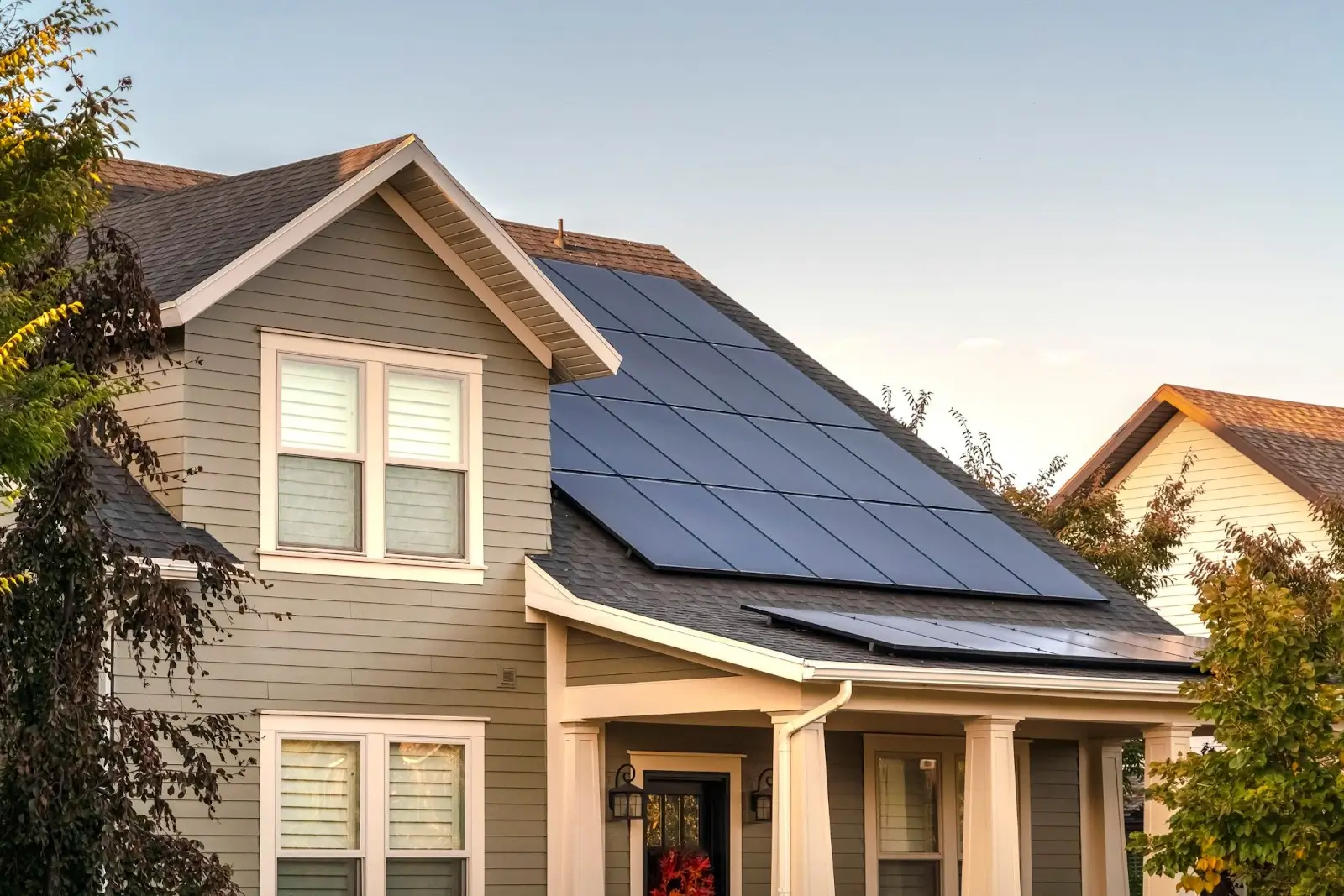Thinking about solar energy? There is an increase in the number of people switching to solar energy, thanks to its promise to save money in the long run. One of the most important things to consider when getting a solar panel installation and unlocking these savings is understanding the solar panel payback period. This is the time it takes for the savings from your solar panels to pay back their initial cost.
In this article, we’ll explore what this payback period means, how to figure it out, and what factors will affect it. Whether you’re new to solar or looking to expand your knowledge, knowing about the payback period is essential for anyone considering solar panels.
What Is A Solar Payback Period?
So what is the payback period for solar panels? The solar payback period refers to the amount of time it takes for the financial benefits and savings from a solar panel system to equal the initial investment cost. Essentially, it’s the break-even point where the cost of installing and maintaining your solar panels, also known as the payback period for solar panels, is fully offset by the savings you accumulate by generating your own electricity and not having to purchase it from the grid.
After the solar payback period, any additional electricity generated by your solar panels translates directly into savings, making your energy essentially free. This period can vary based on several factors, including the cost of the system, the amount of electricity it produces, local electricity rates, and any available solar incentives or rebates. Understanding the payback period for solar panels is crucial for homeowners considering solar energy, as it provides a clear picture of the financial return on their investment.
What Is a Good Payback Period for Solar Panels?
A good payback period for solar panels typically ranges between 5 to 10 years, though this can vary widely depending on several factors, such as geographic location, local electricity rates, the cost of the solar installation, and available incentives or rebates. In regions with high electricity prices and generous government incentives, the payback period can be on the shorter end of that range. Conversely, in areas with lower electricity costs and fewer incentives, the payback period may be longer.
The aim is to have a shorter payback period, as this means you’ll start reaping the financial benefits of your solar panels sooner. After the payback period, essentially, the electricity generated by your solar system is free, significantly reducing your electricity bills and increasing your savings over the lifespan of your solar panels, which can be 25 years or more. Therefore, a good payback period is one that aligns with your financial goals and maximizes your investment in clean, renewable energy.

What Factors Impact Your Payback Period?
Understanding the factors that impact your solar panel payback period is crucial for anyone considering investing in solar energy. These factors can either shorten or extend the time it takes for your solar investment to pay for itself. Let’s explore the key elements that influence this period.
Total System Cost
The overall cost of installing a solar panel system is a significant factor in determining the payback period. This encompasses:
Equipment Costs
The price of the solar panels themselves, along with any additional equipment like inverters and mounting hardware, can vary widely based on quality and capacity.
Financing Options
How you choose to finance your solar system, whether through loans, leases, or cash payments, affects the overall cost and, consequently, the payback period.
Solar Installation Company
The labor costs associated with the installation and the company’s pricing can impact the initial investment.
System Size
Larger systems have higher upfront costs but can generate more savings over time, influencing the payback period.
Solar Incentives & Tax Credits
Government incentives and tax credits are designed to make solar more accessible and affordable, significantly affecting the payback period by reducing the initial investment required.
Upfront Credits and Debits
Immediate reductions in the total system cost through federal, state, or local incentives can lower the initial investment.
Annual Financial Incentives
Ongoing benefits, such as performance-based incentives or sell-back schemes for surplus energy, contribute to annual savings and shorten the payback period.
Average Monthly Electricity Costs and Use
Your household’s energy consumption and the local cost of electricity are essential in calculating the savings solar panels can provide. Higher electricity rates and consumption mean greater savings on utility bills, which can substantially reduce the solar payback period.

How Do I Calculate the Solar Panel Payback Period?
Calculating the solar panel payback period is a straightforward process that helps you understand when your investment in solar energy will start paying off. This calculation is essential for homeowners considering solar panels, as it provides a clear picture of the financial benefits over time. Here’s how you can calculate the payback period for your solar panel system:
- Determine Your Combined Costs
To kick off, you need to figure out the total upfront cost of your solar panel system. This includes the price of the panels, installation fees, any additional equipment needed, and potential financing costs. From this total, subtract any tax incentives, rebates, or grants you’re eligible for. The result is your combined costs, which represent the net investment you’ve made in your solar system.
Formula: Total cost – tax incentives = combined costs
- Calculate Annual Savings
Next, calculate how much you’re saving each year by not having to pay for the electricity your solar panels generate. Add to this any additional financial incentives you receive annually for going solar, such as performance payments or feed-in tariffs. These savings are a critical component of the payback calculation, as they offset the initial investment cost over time.
Formula: Eliminated annual electricity costs + annual incentives = annual savings
- Final Calculation for Solar Payback Period
With your combined costs and annual savings in hand, you can now calculate the solar payback period. Divide your initial net investment (combined costs) by the amount you save on electricity bills and receive in incentives each year (annual savings). The result is the number of years it will take for your solar panels to pay for themselves. After reaching this milestone, any additional savings directly contribute to your financial gain.
Formula: Combined costs / annual savings = solar payback period
Does Solar Pay Off?
The key question many homeowners have is, “Do solar panels save you money?” The answer is a resounding yes. Over the lifespan of your solar panel system, the savings on electricity costs can be substantial. After the initial investment is recouped during the payback period, the electricity that your solar panels generate is essentially free, reducing your monthly utility bills significantly.
With the increasing efficiency of solar technology and the rising costs of traditional electricity, the savings potential is growing. Solar panels also add value to your home, making it more attractive to potential buyers if you decide to sell. With the added benefit of various solar incentives and tax credits offered by governments, the overall cost of installing solar panels can be significantly reduced, making solar an even more attractive investment. In summary, solar panels not only contribute to a more sustainable future but also offer a practical way to save money in the long run.

How Much Does Solar Save You Each Month?
The amount solar saves you each month can vary widely based on several factors, including the size of your solar panel system, your household’s energy consumption, the cost of electricity in your area, and the amount of sunlight your location receives. On average, homeowners can expect to see substantial savings on their monthly electricity bills.
For instance, if your solar panel system generates more electricity than your home uses in a month, you might see your electricity bills drop significantly, sometimes even to zero. In areas with high electricity rates, the monthly savings can be even more pronounced. Additionally, many utilities offer net metering programs, allowing homeowners to sell excess electricity generated back to the grid, further offsetting their costs.
To give a rough estimate, monthly savings can range from $50 to over $200, depending on these variables. This means that over the course of a year, solar panels can save you anywhere from $600 to $2,400 or more on electricity costs. It’s important to calculate your expected savings based on your specific situation to get a clearer idea of how much solar can save you each month.
Why Knowing Your Payback Period Is Important
Understanding the solar panel payback period and how to calculate your solar panel payback period is essential for making an informed decision about whether solar is right for you. It provides a clear picture of the financial benefits and helps you plan for the future.
Ready to make the switch to solar? With Construct Sun’s help, homeowners in Nevada, North Carolina, and Florida are finding out just how rewarding going solar can be. They make it simple for people in places like Reno and Raleigh to switch to solar, guiding them every step of the way through services like residential solar panel installation and offering insights on whether solar panels are worth it in Florida.
Discover how solar panels can transform your home and savings by visiting Construct Sun and exploring their services in Orlando, FL, Reno, NV, and Raleigh, NC. Start your solar journey today and embrace the power of the sun with Construct Sun, where innovative solar solutions meet homeowner satisfaction.






